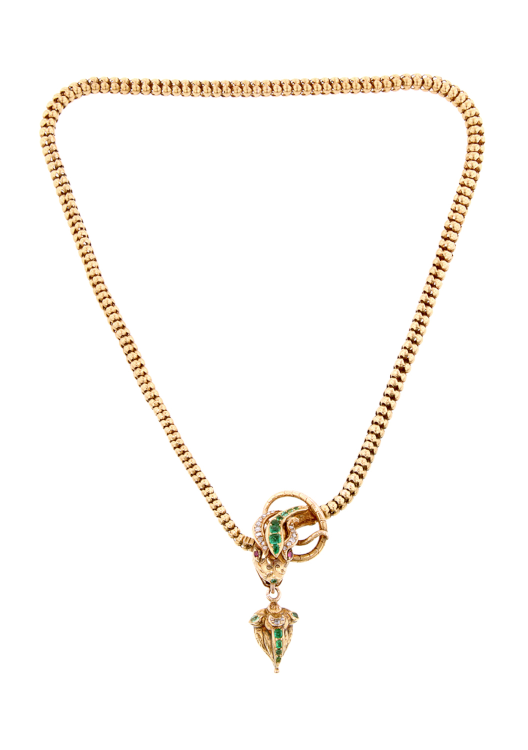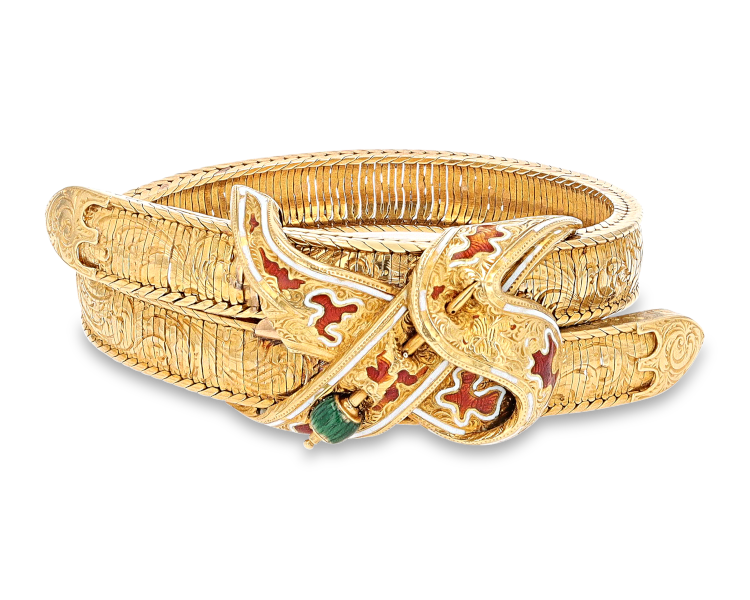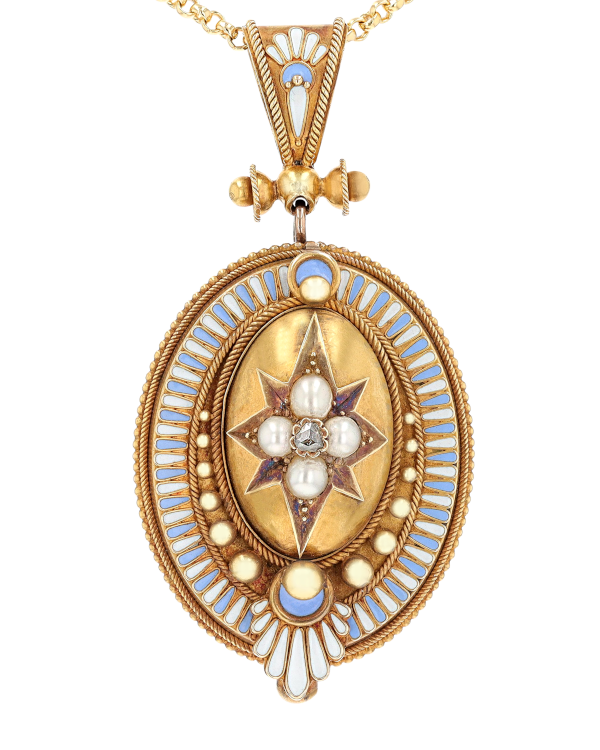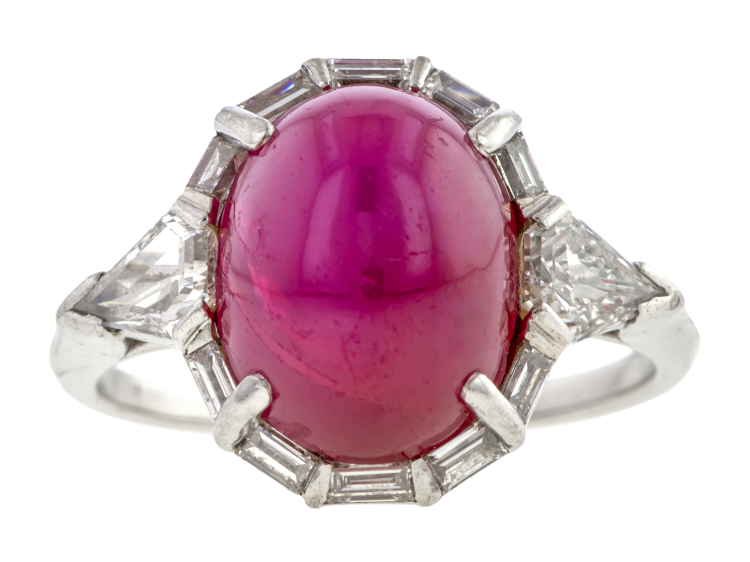Most retailers buying antique and vintage jewelry for their estate departments rely on a mix of know-how, trusted relationships, and a good sense of the market’s nature. While recent changes have made that market more complicated — including the shift toward online and direct-to-consumer sales, a more casual lifestyle in the wake of the pandemic, and skyrocketing prices for rare, authentic pieces — some retailers are selling as well as or better than before.
“The nature of antique and vintage jewelry is that you fall in love with it and buy it with your heart,” says Jim Rosenheim, director of Tiny Jewel Box in Washington, DC. “This is true for the seller and the end consumer.”
Rosenheim took over the store from his parents about 40 years ago and has since turned their antique-jewelry business into a mix of contemporary designers, high-end watches and estate pieces. “There is no formula for selling and buying estate,” he asserts. “It’s all about going with your gut.”

Where to shop
Many other retailers agree, having found their own ways to bring fresh pieces from the past into their stores. From personal estates to trade shows, there are plenty of channels for sourcing goods. Rosenheim’s sources of choice include private clients and collectors, estate sales, previous customers or their children, and dealers with whom he’s built relationships. There are also the under-the-radar finds, and he travels throughout the US and Europe to seek out these pieces.
Bill Rau is partial to the same methods as Rosenheim. “Around 15 to 20 years ago, we used to be able to buy at auction,” adds the owner and president of M.S. Rau. “But then the auction houses started marketing to the consumer, and it became impossible to get well-priced merchandise anymore.”
These days, he shops at the Las Vegas and Miami antique shows, visiting vendors who have worked with him a long time. “They often put pieces aside for me that we either discussed before the show or that they know I’ll be interested in.”

A pair of Victorian earrings in silver and 12-karat gold with natural pearls and diamonds. (M. S. Rau)
Dana Kiyomura, whose Keyamour business sells antique and vintage pieces to both retail shops and private clients, takes a similar approach. As a seller, she says, “I will definitely hold jewelry aside that I think might be right for my retail clients at the trade shows in which I exhibit.” To find merchandise herself, she turns to her traditional sources who know her tastes and specialize in periods or styles she is likely to buy.
“This business is all about building relationships with the dealers that sell to you, and the retailers to whom you supply,” she affirms. “But I also think that the pandemic forced us to find new avenues to buy and sell. Even prior to this, marketplaces of dealers were being created, like [online community] The Jewelers Circle, which is a relatively new phenomenon but wonderful for sharing photos and information. [This can] open up a wider network and also might help to increase your audience.”

A Victorian ribbon bracelet in yellow gold and enamel. (M. S. Rau)
Finger on the pulse
Once you have all your resources lined up, it’s easier to purchase pieces for your estate cases. But you also have to know your market, says Rosenheim.
“The pandemic changed the way women dress all around the US,” he explains. “The current lifestyle dictates much more casual, easy fashion, and here in DC, women aren’t going to the galas they previously attended. Therefore, the larger, more elaborate antique and vintage pieces aren’t in demand like they were when women had a different event every evening. We have adjusted our buying to accommodate smaller, less dressy pieces that can be combined with our contemporary pieces for an individualized approach.”
Elizabeth Doyle has seen a similar trend. The co-owner of jeweler Doyle & Doyle went from owning her own store to buying for private clients and other shops, and she recommends adjusting your merchandise mix based on what you’re able to source. At the moment, that tends to be “less-precious, more everyday wearable and durable styles such as Retro and mid-century modern, rather than the Georgian and earlier periods that were popular a few years ago,” she reports. “Fortunately, these more wearable jewels are currently what our retailers and end customers are asking for as people start to venture out after the pandemic.”
In addition to availability, a key determiner of what you stock is the cost. Doyle, Kiyomura and Rau have different strategies for dealing with the growing expense of getting quality pieces.

“In the past, you were able to find a good selection of different periods from one source,” says Doyle. “But with the prices going up and greater demand for the rarer and more unique, you need to be more scrappy and cast your net further, getting referrals from other trustworthy sources and purchasing from the smaller, more independent dealers on Instagram who may not have the same overhead and from whom you might get a better price.”
In contrast, Kiyomura believes it’s better to narrow your scope. “The rise in prices means you need to be more discerning and careful in how much you buy,” she says. “Invest in the most original, unique and rarest pieces and have faith that the end consumer will purchase them. I believe that collectors are still looking for excellent quality and styles that are distinctive to different time periods. However, it is always wise to pepper your cases with a mix of periods and styles and a range of prices.”
Rau also continues to buy jewelry from multiple time periods — even at higher prices. He believes the end consumer will accept the extra cost if the age, beauty, authenticity and design are there.

Questions of price
Pricing the pieces you sell is tricky. There are many aspects to factor in, and it’s hard to come up with a one-size-fits-all formula.
The decision often depends on what the retailer — and the dealer before that — has paid for the piece. Marking up the item by a set percentage can give sellers some leeway when clients ask if “this is the best price you can offer,” as they often do with estate jewelry. Kiyomura and Doyle believe in buying at various price points so they can offer options for a range of budgets.
In general, when dealers or buyers fall head over heels for an item, they’re usually willing to pay more — which goes back to Rosenheim’s comment about buying with your heart.
“We will work closer to the margin depending on how badly we want a piece and how quickly we think we’re going to sell it,” Rau explains. How long an item has been in inventory is a consideration as well. “We don’t tend to raise our prices on older stock. We want to turn over our merchandise that we have had for a while to allow us the space and budget to buy fresh pieces.”
Main image: 20th-century gold and silver brooch with rubies and diamonds, which went up for sale at Sotheby’s in 2018. (Gem Kreatives)
Source link
